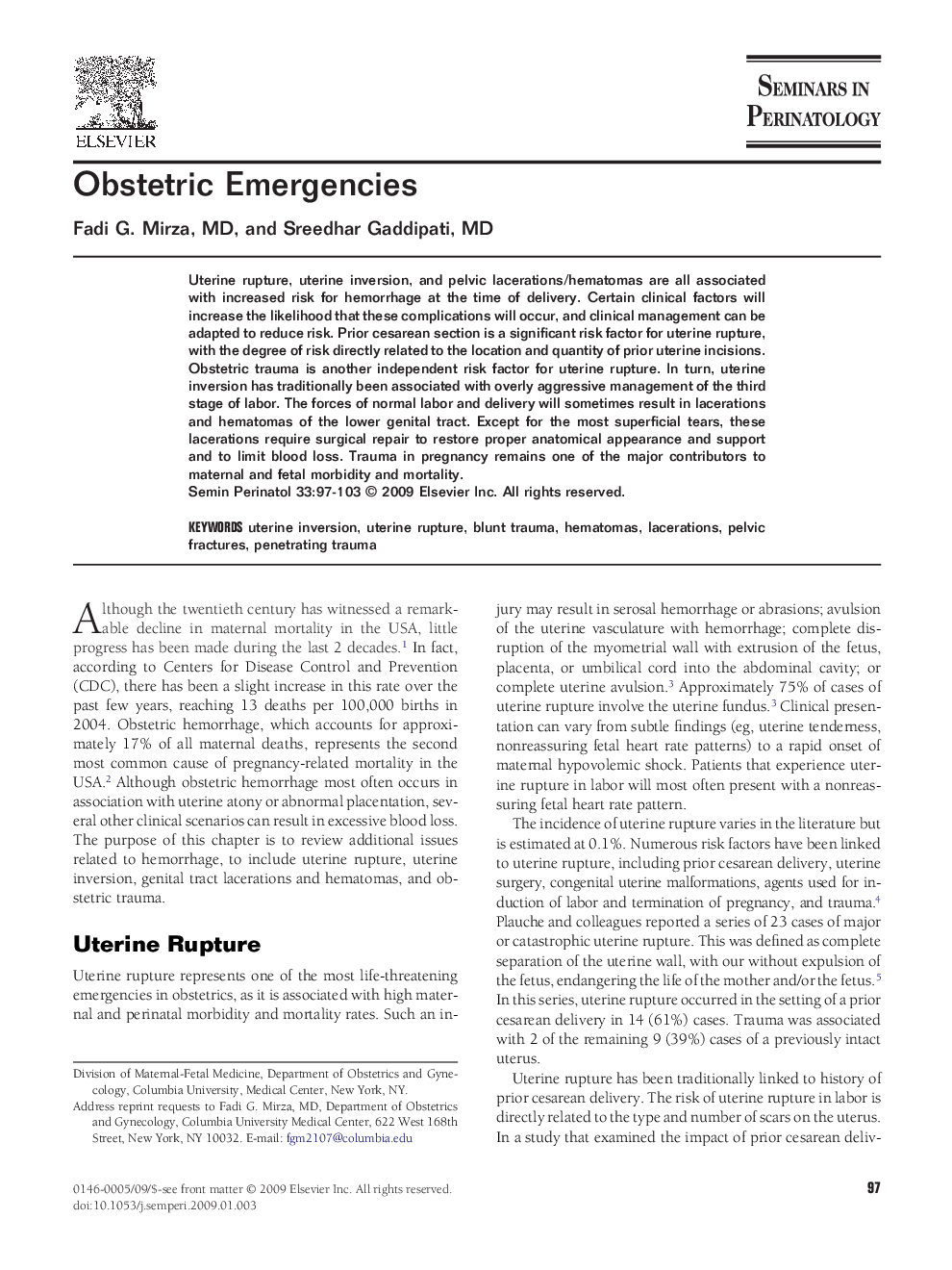| Article ID | Journal | Published Year | Pages | File Type |
|---|---|---|---|---|
| 3836876 | Seminars in Perinatology | 2009 | 7 Pages |
Uterine rupture, uterine inversion, and pelvic lacerations/hematomas are all associated with increased risk for hemorrhage at the time of delivery. Certain clinical factors will increase the likelihood that these complications will occur, and clinical management can be adapted to reduce risk. Prior cesarean section is a significant risk factor for uterine rupture, with the degree of risk directly related to the location and quantity of prior uterine incisions. Obstetric trauma is another independent risk factor for uterine rupture. In turn, uterine inversion has traditionally been associated with overly aggressive management of the third stage of labor. The forces of normal labor and delivery will sometimes result in lacerations and hematomas of the lower genital tract. Except for the most superficial tears, these lacerations require surgical repair to restore proper anatomical appearance and support and to limit blood loss. Trauma in pregnancy remains one of the major contributors to maternal and fetal morbidity and mortality.
